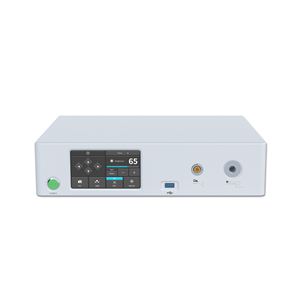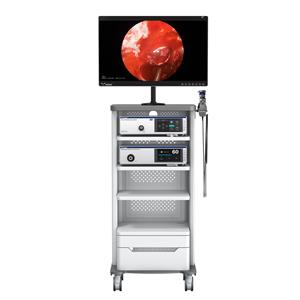The Difference Between Flexible Cystoscope And Rigid Cystoscope
Cystoscopy is one of the most commonly used inspection tools in urology. So far, metal rigid cystoscopes are basically used in clinical practice. With the development of intracavitary urology, flexible cystoscopy has come out and has been used clinically.
The difference between flexible cystoscope and rigid cystoscope:
The flexible cystoscope has a soft body, a small diameter and bendable. The diameter of the rigid cystoscope for adults is generally F19.5-21, while the diameter of the flexible cystoscope is generally ≤ F16. Due to the smaller diameter, the patient's pain is reduced. During the entire inspection process, no matter how the mirror body rotates or is lifted and inserted, there is no discomfort. The vast majority of patients have no pain when urinating immediately after the examination, and a few patients have mild gross hematuria after the examination, and the rest of the urine is normal.
With rigid cystoscopy, the patient can only use the lithotomy position. When using flexible cystoscopy, in addition to the lithotomy position, the patient can also use the lateral or supine position. This provides convenience for patients with quadriplegia, paraplegia, and patients with severe arthritis. Since the flexible cystoscope enters the bladder through the urethra under direct vision, and can be bent with the normal physiological bending of the urethra, the damage to the urethra is reduced. It is very difficult to use rigid cystoscope to check patients with semi-rigid penile prostheses, and often fails. The length and operability of flexible cystoscope have increased, making this examination easy to complete.
Generally, a 0° direct-view mirror is used when inspecting the urethra, and a 30°~120° side-view mirror is required when inspecting the bladder. Therefore, it is often necessary to disassemble and assemble components when using rigid cystoscope to inspect the bladder and urethra, and replace the observation glasses with different angles. Observe various parts of the bladder and perform intracavitary operations; there are no such shortcomings when operating with a flexible cystoscope. Due to the limitation of the observation angle, the rigid cystoscope has a certain blind area in the bladder; the flexible cystoscope overcomes this shortcoming, and the urethra can be observed when inserted under direct vision. The flexible cystoscope can bend in the bladder and bend upward 220° , Bend down 90°, increase the observation range. It is reported that the missed diagnosis rate of flexible cystoscope for tumor is not higher than that of rigid cystoscope.
Although flexible cystoscope has many advantages over rigid cystoscope, it also has some shortcomings. If the lumen is thin, the infusion of liquid is slow, and the blood in the bladder cannot be cleared quickly, it should not be used in patients with acute bleeding and blood clots in the bladder. Because flexible cystoscope is difficult to orientate inside the bladder, it needs a proficiency and adaptation process. The price of a flexible cystoscope is higher than that of a rigid cystoscope with the same performance and its service life is shorter than that of a rigid cystoscope, thus increasing the cost of examination.
Flexible cystoscope is very suitable for intra-renal applications due to its thin, flexible and long body. It is especially suitable for the treatment of renal secondary stones caused by ureteral obstruction and postoperative renal residual stones.




